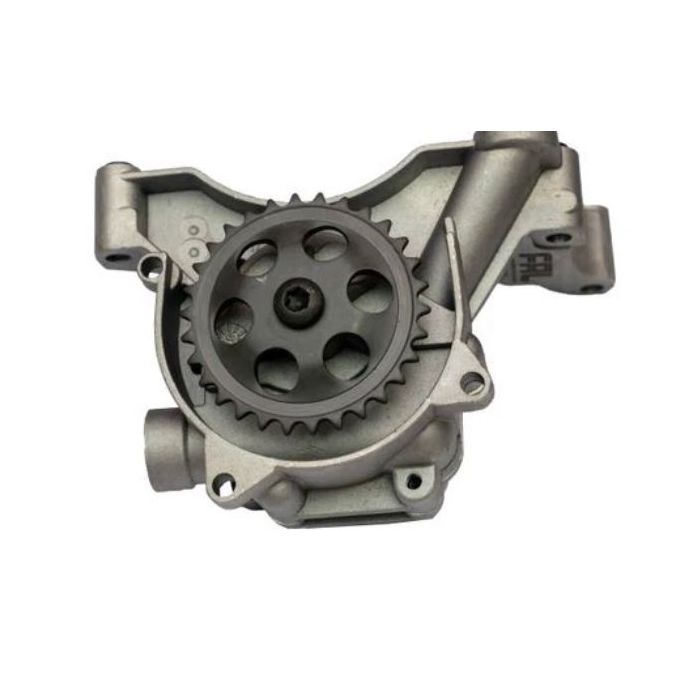Achieve peak performance with a reliable clp engine.
How a Clp Engine Can Boost Performance in Various Industries
The introduction of CLP engines marks a significant shift in operational efficiency throughout numerous fields, driven by their ability to enhance fuel intake and lessen downtime. As organizations progressively focus on sustainability together with efficiency, the duty of CLP engines becomes also extra vital.
Summary of CLP Engines
CLP engines, or Constant Fluid Propellant engines, represent a significant innovation in propulsion modern technology, specifically for space applications. These engines use a continuous feed system that permits the sustained expulsion of propellant, resulting in boosted efficiency and performance compared to typical strong or hybrid propulsion systems. By keeping a continuous circulation of liquid propellant, CLP engines can achieve more specific drive control, which is crucial for steering spacecraft in numerous mission situations.
The style of CLP engines incorporates advanced products and innovative fuel management systems. clp engine. This leads to minimized weight and boosted integrity, essential variables for long-duration room goals. The continual procedure decreases the risk of burning instability, a typical difficulty in conventional rocket engines.

Benefits in Production
The manufacturing of Constant Fluid Propellant (CLP) engines offers a number of noteworthy advantages that boost both performance and cost-effectiveness. One of the key advantages is the streamlined production process, which decreases the complexity related to traditional propulsion systems. By utilizing fluid propellant, manufacturers can achieve higher accuracy in engine performance, resulting in optimized power outcome and decreased waste.
Additionally, CLP engines help with a higher level of modularity, permitting much easier integration right into various manufacturing lines. This flexibility can dramatically lower preparations and enhance general functional adaptability. Making use of CLP modern technology also tends to minimize the need for extensive maintenance as a result of fewer moving components, which converts into lowered downtime and operational expenses.

Applications in Logistics
Leveraging Continual Fluid Propellant (CLP) engines in logistics offers considerable advantages in operational efficiency and integrity. These engines supply a durable remedy for various transportation needs, making it possible for the smooth motion of products throughout large distances. The inherent layout of CLP engines enables for consistent power outcome, this content which equates right into smoother and a lot more foreseeable transport timetables.
One of the key applications of CLP engines in logistics remains in sturdy freight transport, where they can drive both ground and aerial lorries. Their capacity to preserve high performance under varying tons problems ensures that distribution timelines are met, thereby boosting customer satisfaction. Furthermore, CLP engines can be incorporated right into automated logistics systems, promoting real-time monitoring and optimizing course planning.
In addition, the sturdiness of CLP engines minimizes upkeep downtime, allowing logistics business to optimize their functional capabilities. This is especially valuable in warehousing operations, where efficiency in managing and carrying items is essential. As logistics continues to develop, the integration of CLP engines stands for a forward-thinking approach that not only improves efficiency yet likewise supports the industry's expanding demands for integrity and speed.
Effect On Power Performance
Exactly How do Constant Fluid Propellant (CLP) engines boost power efficiency in transport? CLP engines use a constant flow of fluid fuel, maximizing burning processes and keeping a steady thrust output. This style decreases power losses connected with standard burning engines, where gas delivery can vary and result in inadequacies.
The constant operation of CLP engines enables have a peek at this site for an extra effective thermal cycle, causing greater particular impulse contrasted to traditional engines. clp engine. This equates to lowered gas intake for the very same amount of work done, considerably reducing operational prices throughout various transportation fields, consisting of aeronautics and maritime sectors
Furthermore, the capacity of CLP engines to maintain optimal efficiency under varying load problems lowers the demand for regular acceleration and deceleration, additionally boosting fuel efficiency. Improved energy efficiency not only adds to set you back savings yet also causes lower greenhouse gas emissions, lining up with global sustainability objectives.
Future Trends and Innovations
Arising advancements in Continuous Fluid Propellant (CLP) engine modern technology promise to transform the landscape of transport effectiveness and sustainability. As sectors pivot towards greener choices, CLP engines stand at the leading edge, integrating ingenious products and layout techniques that enhance performance while minimizing ecological effect.
Among one of the most appealing patterns is the adoption of crossbreed systems that combine CLP engines with renewable resource sources. This synergy can enhance fuel consumption and minimize exhausts, straightening with worldwide sustainability objectives. Additionally, innovations in computational fluid dynamics (CFD) are assisting in the design of more aerodynamically efficient engines, causing decreased drag and improved fuel efficiency.
In addition, the development of wise monitoring systems is established to enhance operational performances. These systems take advantage of data analytics and IoT technology to maximize engine efficiency in real-time, making sure that the engines operate within their most reliable parameters.
As research remains to discover alternate propellant formulas-- such as biofuels and synthetic gas-- the future of CLP engines looks encouraging. By taking advantage of these innovations, industries can not only enhance their efficiency yet additionally add considerably to a cleaner, more sustainable future in transport.
Final Thought
In verdict, CLP engines stand for a considerable innovation in efficiency across numerous markets. Their ability to maximize gas consumption and reduce functional costs, integrated with a constant feed system, enhances power output and functional integrity. The combination of innovative Website materials and less relocating parts lessens maintenance demands, while placement with sustainability objectives placements CLP engines as a crucial technology for the future. Continued innovation in this field guarantees additional improvements in effectiveness and environmental performance.